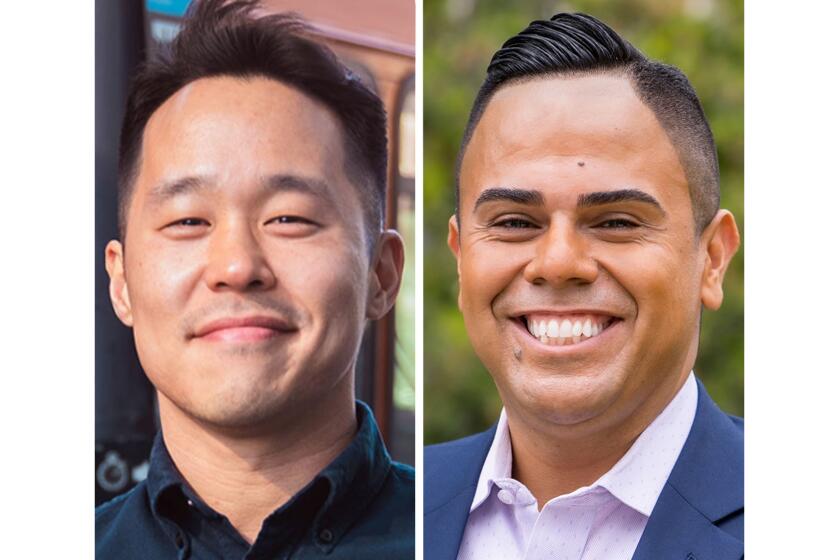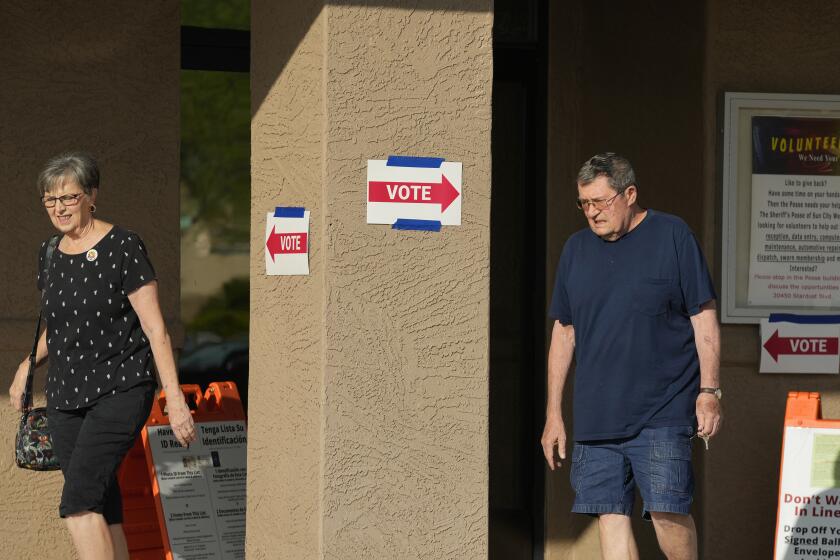California’s unresolved moral dilemma over executions
I am not in favor of the death penalty. That’s not my bleeding heart speaking, but my intellectual queasiness over state-sanctioned killing.
Our justice system tilts on too many elements beyond guilt or innocence — money and race, jury composition, attorney competence — to promise that every person ordered to die deserves that ultimate sentence.
It is not as uncommon as we’d like to think for an innocent person to be saddled with a death sentence. In the last 35 years, at least 138 men have been freed from Death Row after being exonerated by new evidence, revelations of official misconduct or technological advances such as DNA testing.
Still, even a death penalty opponent can acknowledge the perversity of California’s long-running drama over exactly how unpleasant the execution process is allowed to be.
Lawyers for Albert Greenwood Brown, who raped and murdered a 15-year-old girl 30 years ago, are fighting to delay his death by lethal injection, now scheduled Thursday, until the courts resolve whether the state’s three-drug execution cocktail subjects condemned inmates to an unconstitutionally cruel death.
Executions had been on hold for almost five years, since U.S. District Judge Jeremy Fogel found a “disturbing” and “pervasive lack of professionalism” in the state’s system for carrying out lethal injections in 2006.
The death chamber was too small and cramped, the corrections officers poorly trained and the drug regimen may have failed to fully anesthetize inmates before the painful process of death began, he said.
The state responded by building a more spacious chamber, surrounded by viewing cubicles and connected to an Infusion Control Room, where a masked execution team will deliver deadly drugs through the veins of inmates strapped to a gurney and cuffed at the ankles and arms.
On Friday, Fogel cleared the way for Brown’s imminent executioneven though the judge had yet to tour the new chamber or review the revised procedures.
Maybe he, too, recognizes the absurdity of arguing over whether the lighting in the death chamber is too dim to illuminate an execution.
---
If there’s an inmate in California who deserves the death penalty, it would be Albert Greenwood Brown Jr.
Brown served less than four years in prison for ambushing and raping a 14-year-old girl in her Riverside home in 1977. Four months after his parole, on Oct. 28, 1980, he snatched Susan Jordan as she walked to school, raped her, strangled her with her shoelace and left her body in an orange grove near Riverside’s Arlington High School.
That night he called Susan’s home several times and taunted her worried mother. “Susie isn’t home from school yet, is she?” he asked. Brown told her where to find her daughter: “the corner of Victoria and Gibson, fifth row.” Hours later, a police dog found Susan’s body, half-nude, face down in the dirt.
The evidence at Brown’s 1982 trial was overwhelming. Witnesses had seen him approaching Susan. His semen-stained clothes were stashed in his work locker. The girl’s missing schoolbooks were found in his home, along with a telephone directory open to the page with her parents’ phone number. One of Brown’s calls to the Jordans was recorded and two of his friends recognized Brown’s voice.
The jury convicted him of rape and first-degree murder and took less than three hours to reach a verdict of death.
The California Supreme Court twice reversed Brown’s death sentence, for an improper jury instruction and incomplete handling of a post-trial motion. The death sentence was reinstated by the U.S. Supreme Court. Years of appeals in federal court followed, with claims that his trial lawyer was inept and that jury members might have spared Brown’s life if they had known that his aunt beat him with a broom handle when he was young.
That kind of grasping at technical straws is par for the course in capital cases. But it rarely saves a condemned person’s life and almost always intensifies victims’ pain.
No family of a murdered child should have to wait 30 years for justice while the inmate argues that the jury mulling his sentence overlooked his bad grades and ADD.
Susan Jordan’s mother said as much in her letter to Gov. Arnold Schwarzenegger this month, urging that Brown’s execution go forward.
“It is unconscionable to put decent, law-abiding citizens through this prolonged nightmare,” wrote 70-year-old Angelina Jordan. “This execution must take place. No more clemency. No more appeals. No more delays. No more technicalities and legal loopholes.... How much longer must we endure this injustice?”
---
Arguments are brewing now over whether Judge Fogel got it right. He has been accused of rushing Brown into the death chamber while important questions remain unanswered. Lawsuits challenging the injection process are pending, and Brown’s lawyers had hoped the next governor might consider clemency.
Fogel seems to recognize that his decision will not resolve California’s dilemma. “The moral and political debate about capital punishment will continue, as it should,” he wrote.
We seem to have settled the political debate. Californians have said again and again, by a margin of more than two to one, that they approve of the death penalty.
But we have the nation’s largest death row not because we’re so gung-ho, but because the march from courtroom to death chamber typically takes 20 to 25 years to finish.
That reflects, in part, our unresolved moral dilemma. What exactly are we trying to satisfy when we rely on the death penalty: deterrence, public safety, a desire for vengeance? And how do you protect the rights of both criminal defendants and the families consigned to an emotional hell by the crimes those men and women committed?
The notion of making the process of death more “humane” seems like an easy way out: A favorite last meal, a pastoral meeting, a final exit that feels like going to sleep. Those may mute our collective unease.
But the real problems with the system are harder to solve than cramped quarters in the death chamber or whether we kill condemned inmates with one drug or three.
How much time and effort are we willing to spend to make execution painless — or at least not unconstitutionally pain-filled — for a man whose crime inflicted so much pain on a teenage girl, her family and community?
sandy.banks@latimes.com
More to Read
Get the L.A. Times Politics newsletter
Deeply reported insights into legislation, politics and policy from Sacramento, Washington and beyond. In your inbox three times per week.
You may occasionally receive promotional content from the Los Angeles Times.










